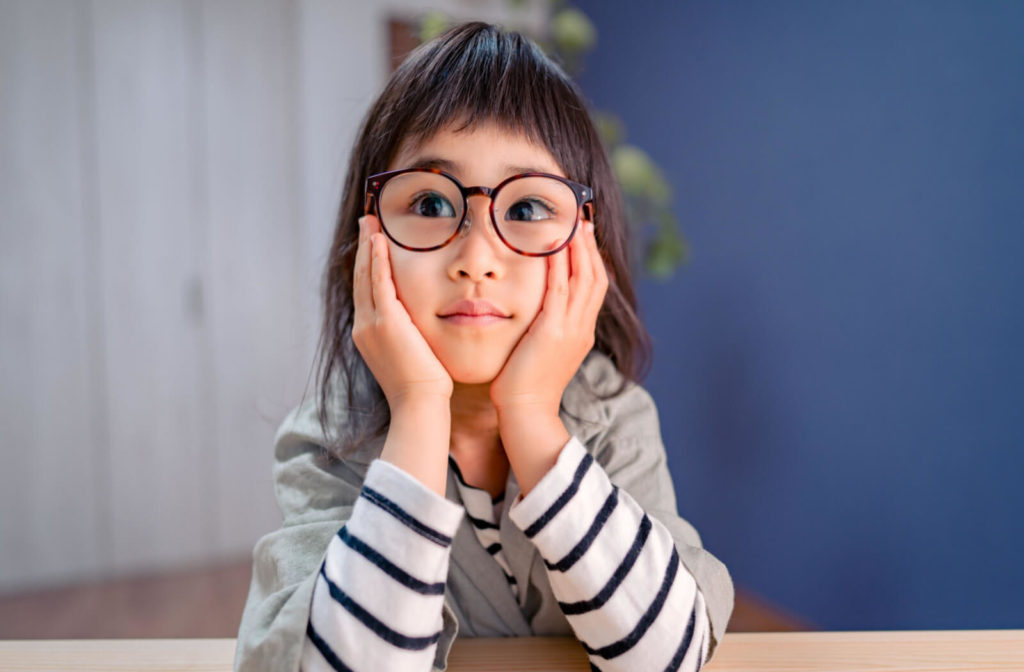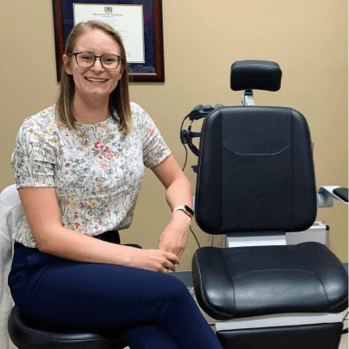While lazy eye and strabismus may have similar qualities, there are some key differences. They both typically develop in childhood, and the only way to diagnose them is to bring your little one in for a comprehensive eye examination.
Read on to explore the differences between lazy eye, medically known as amblyopia, and strabismus.
What Is Lazy Eye?
Lazy eye is the common term used for amblyopia. It typically develops in children, but it can develop later in life.
Despite its name, a “lazy eye” is not lazy. It’s not that the eye doesn’t want to function to its fullest potential—the reason for the symptoms is that it hasn’t been given the same opportunity.
Amblyopia develops due to a lack of the brain’s ability to use the eyes together as a team and often results in reduced vision in one eye.
Why Does Lazy Eye Develop?
There are several factors that can lead to amblyopia. Surprisingly, amblyopia often does not show symptoms, so scheduled visits to your child’s optometrist are important during their developing years.
Amblyopia can develop due to:
- Differing vision development between the two eyes due to nearsightedness (myopia), farsightedness (hyperopia), or astigmatism.
- Misaligned or crossed eyes due to a condition like strabismus.
- An obstruction in vision caused by things like cataracts, droopy eyelids, and more.
How to Detect Amblyopia
How can you detect a lazy eye if the condition doesn’t necessarily live up to its name? Without obvious signs there is an issue, you may wonder how you can protect your child’s vision.
Thorough, complete children’s eye exams are the only way to know for sure whether or not your child is developing any eye conditions, like amblyopia. Your child’s optometrist may also be able to determine if they are at risk of developing this condition in the future.

How Does Amblyopia Differ from Strabismus?
Amblyopia and strabismus often get confused as being the same. But, we can tell you that they are quite different.
While both can cause double vision, there are some key differences between the causes of strabismus and amblyopia, and how they affect vision.
How Vision Works
When light enters the eye, it refracts onto the retina. From there, the light is transmitted to the brain and interpreted as the images we see. Both of your eyes are receiving and transmitting this information simultaneously, which your brain combines to provide you with the full picture.
When your eyes or brain (or both!) aren’t working together to their fullest potential, issues can occur.
Strabismus & Your Eyes
During childhood, the internal and external structures of the eyes develop rapidly. Strabismus occurs as a physical adaptation to a neurological issue. There are several causes of strabismus including uncorrected refractive errors, poorer vision in one eye, trauma, visual stress, brain injury, and more.
Strabismus can cause one eye to turn in, out, up, or down.
Comparing Amblyopia & Strabismus
- Amblyopia symptoms include blurry vision, poor depth perception, clumsiness, and more. Strabismus symptoms include double vision, poor reading, poor attention, and more.
- Amblyopia causes vision in one eye to become weaker than the other. Strabismus may look like crossed eyes, where one eye turns in, out, up, or down.
- Amblyopia can develop as a result of untreated strabismus.
Similarities of Amblyopia & Strabismus
- Both benefit from treatment as early as possible.
- Both conditions will not resolve on their own.
- Both benefit from vision therapy.
- Both can cause vision impairment.
- Both can develop as a result of uncorrected refractive error.
Treating Amblyopia & Strabismus
Using both of your eyes to see is called binocular vision.
There are several treatment options available to help improve the way your eyes work together. First, you should begin with a comprehensive eye exam, so your optometrist can identify your binocular vision issues.
Then, you can complete a binocular vision assessment to determine the exact cause of your vision issues, and get started on a treatment plan right away.
Leaving strabismus and amblyopia untreated can cause lifelong vision challenges.
Binocular Vision Treatment for Adults & Children
Vision issues like amblyopia and strabismus often begin while the eyes are developing in childhood, but you could experience these issues later in life as well.
The sooner your binocular vision issue is diagnosed, the easier it can be to correct it. Even if you’re an adult, you can work to improve your vision with the help of your optometrist.
Get Treatment for Vision Issues
Whether you or your child are experiencing vision issues, you can get the help you deserve at Beyond 20/20. As Moncton’s trusted vision therapists, our team is here to help you achieve your best vision possible. Schedule your child’s next eye exam, or your next appointment today.




